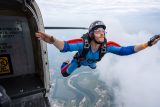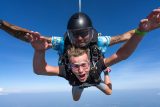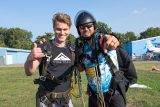First Skydive: Tandem Skydive or Solo Skydive
Skydiving
Posted by: Start Skydiving
12 months ago
Thanks to the exhilarating, eye-catching, and awe-inspiring qualities of skydiving, it’s a popular activity that is on just about everyone’s bucket list. Many thrill-seekers dream of soaring through the skies totally free, with only a parachute rig on their backs and the wind in their hair. Bliss!
Your first time skydiving experience is super important. It can set the bar for not only a life-changing, one-and-done experience, but it also could potentially open the door to a whole new world and become a new-found hobby that totally takes over your life (in the best way possible)! If you’re ready to turn your dreams into reality, you might be wondering what is the difference between solo and tandem skydiving, and which you should start with? It’s a question we hear often, and we’ve got answers for you right here!
What is Tandem Skydiving?
Tandem skydiving is the most popular choice for first-time jumpers. Why? Because on a tandem jump, you are securely harnessed to a certified, skydiving professional who is in charge of controlling the jump from exit to landing. Your job on the tandem skydive? Relax, enjoy, and be sure to listen closely to whatever instructions are given by your assigned tandem instructor. Easy day!
Tandem skydiving is designed to allow you (the tandem student) to enjoy the experience of skydiving without the added pressure of operating skydiving equipment, landing a parachute, or performing emergency procedures (if necessary). Phew!
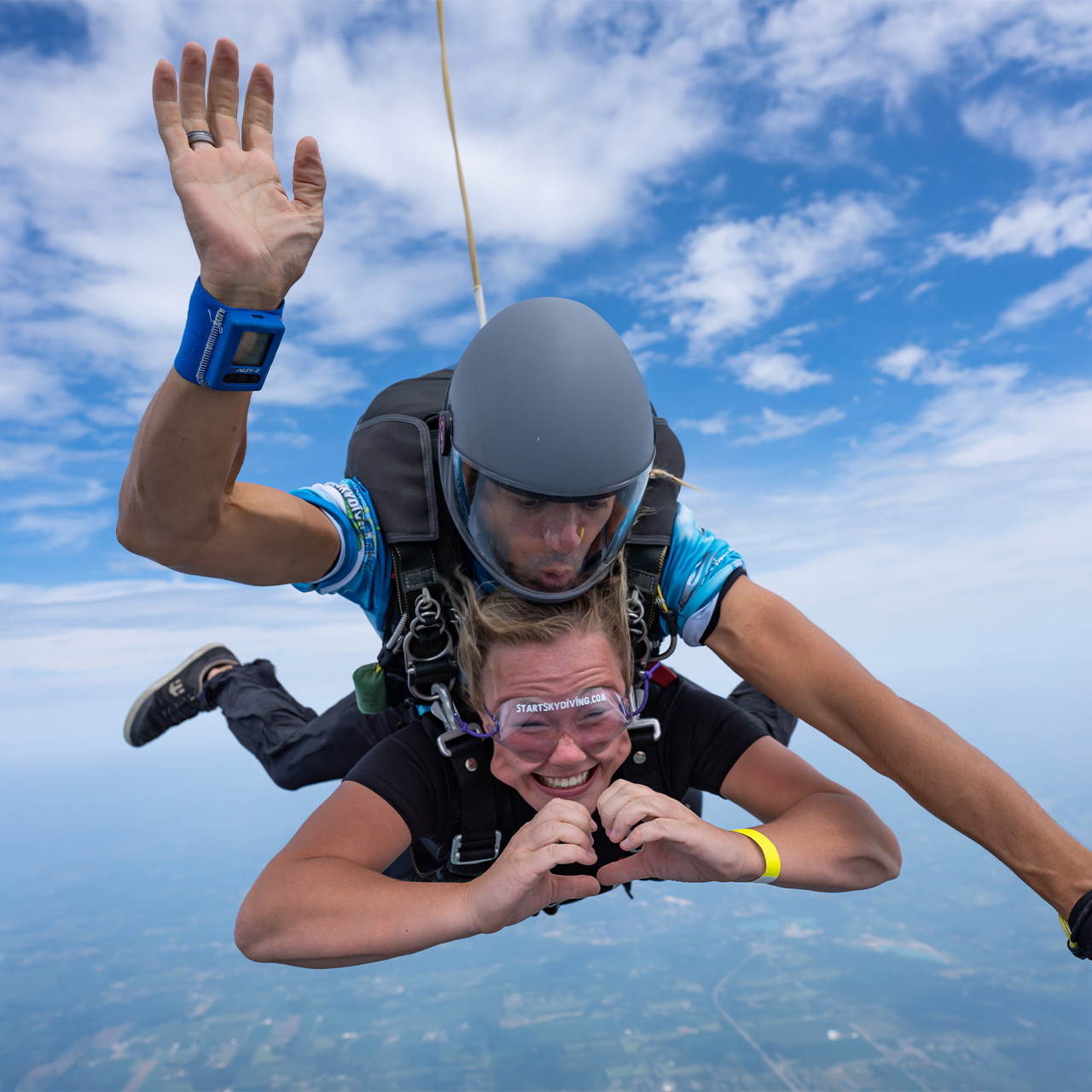
How Tandem Jumps Work
Before making a jump, you’ll participate in a brief training session during which the instructor will explain the process. The brief will include proper body position for exit and freefall, what to expect during freefall, what signals to know, and landing techniques.
When it’s your turn to go, you and your instructor will board the airplane together. The instructor will connect the special harness system that securely attaches you together inside the airplane. The instructor takes charge of the entire jump, including deploying the parachute and ensuring a successful landing.
Benefits of Tandem Skydiving
1. Safety
With an experienced instructor managing the skydive while using dropzone-owned and maintained gear, the inherent risk of jumping out of a plane is minimized significantly. Your instructor handles all technical aspects, allowing you to enjoy the experience without worry. We’ll touch on skydiving safety again in a minute.
2. Easy for Beginners
To take on a tandem skydive, training is minimal – making skydiving accessible for beginners and those without any prior skydiving experience.
3. Quick & Exciting
Tandem skydives provide a rapid introduction to skydiving, with the opportunity to experience free fall and parachuting on your very first jump without any other commitments. Come. Jump. Leave. OR stay!! We love to hang out with our guests. Besides, there’s plenty of other things to do at our facility – like indoor climbing!
What is Solo Skydiving?
Solo skydiving is specifically taught through the Accelerated Free Fall (AFF) program. The AFF skydiving program offers a scaffolded and comprehensive learning experience for those interested in achieving a skydiving license or just wanting to operate the parachute themselves!
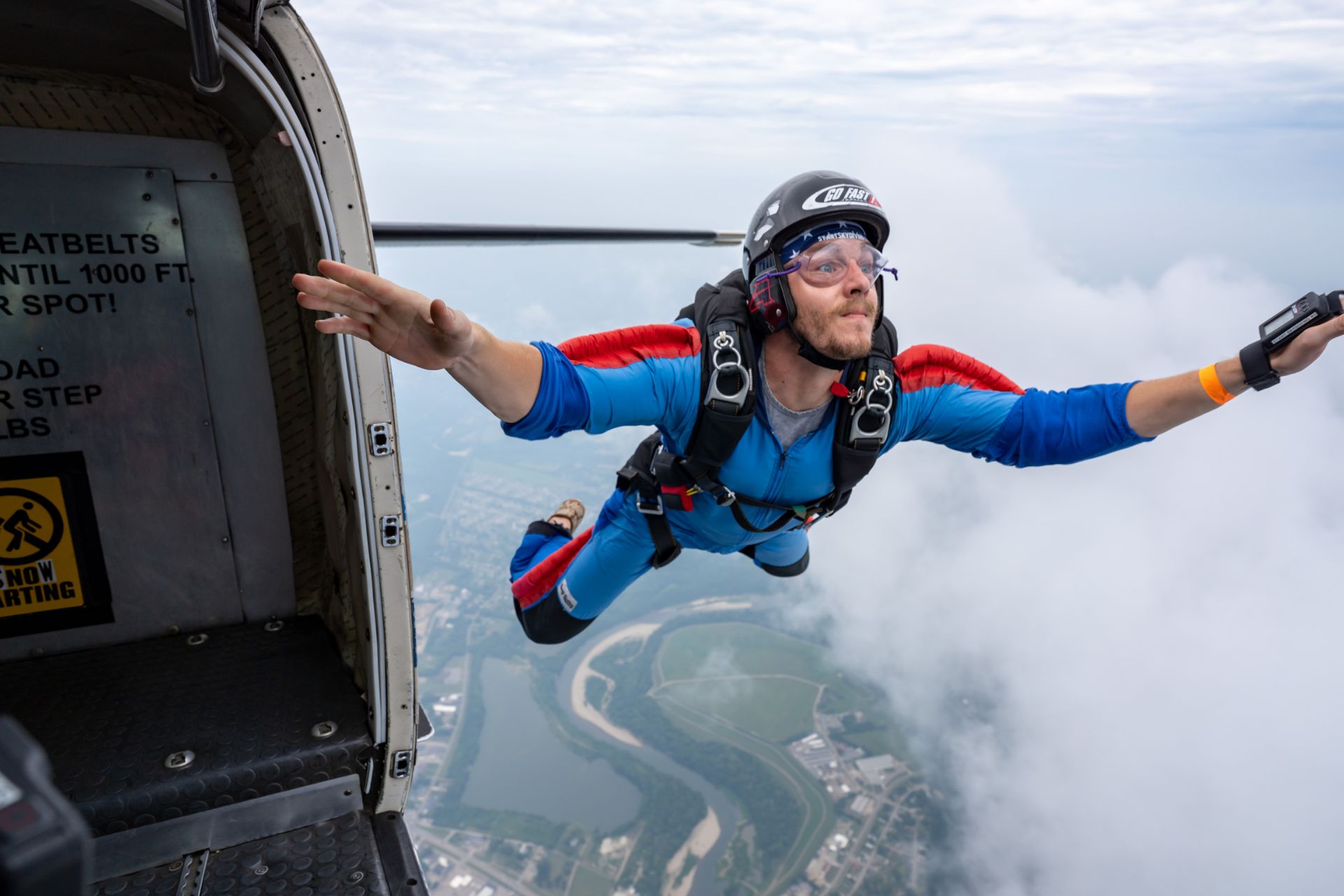
Steps Before Your First Solo Jump
Solo skydiving requires much more preparation and training than a tandem jump – five to eight hours more to be exact. The AFF program starts with the First Jump Course (FJC), where you will learn everything you need to perform a successful skydive all by yourself!
After the FJC, you will complete your first Category A jump (with two AFF instructors by your side) from 10,000 to 12,000 feet, and your first solo parachute flight from 5,500 feet! From there, you can decide to continue through the AFF program through a series of jumps of different skills in order to receive the first of four skydiving licenses issued by the United States Parachute Association (USPA): the A license.
Challenges & Rewards of Solo Skydiving
1. Training & Certification
How many tandem jumps before solo skydive? The answer depends on the dropzone where you’re jumping. At Start Skydiving, it is not mandatory to first make a tandem skydive before enrolling in the Start Skydiving Jump Institute, but it is highly recommended as it is a great introduction to the sport of skydiving before making the commitment to go solo.
How many jumps before solo? Getting your USPA A license requires extensive training and certification through a total of 25 jumps. While you could just go through the FJC and only complete the Category A jump, it might not necessarily feel like a solo skydive because your instructors are holding onto you during freefall.
2. Independence
Jumping solo means you are responsible for all aspects of the jump, from exiting the aircraft to deploying and landing the parachute.
3. Rewarding Experience
Successfully completing a solo jump offers a significant sense of achievement, the freedom to skydive independently in the future, and access to our phenomenal, international skydiving community.
Solo vs Tandem
Safety Comparison
The USPA has tracked skydiving safety statistics since the 60s. Tandem and solo skydiving have become increasingly more sophisticated over the last several decades, and both have impressive safety statistics – especially compared to other extreme sports.
Is tandem skydiving safer than solo? Well, if we look at the statistics, yes. Over the past decade, tandem skydiving has seen an average of one student fatality per 500,000 jumps. In 2023, there were zero tandem skydiving fatalities in the United States. Solo skydiving has a fatality rate of 0.27 per 100,000 jumps (1 in 370,000).
Improvements in safety statistics over time have everything to do with standardization and ongoing improvements in training, advancements in skydiving gear and technology, and an industry-wide focus on safety. Tandem instructors hold a USPA D license (the highest license level attainable), have at least three years in the sport, have completed a minimum of 500 skydives, and have completed rigorous coursework and exam requirements.
Cost Implications
There are, of course, major price differences in skydiving once or twice versus learning how to skydive on your own! At Start Skydiving, a tandem skydive experience starts at $239, while the First Jump Course (ground school and first jump) is $359. The entire AFF program costs upwards of $4,315.
Here’s the great news … once you are a licensed skydiver, you just buy “lift tickets” to altitude, which are around $30 a pop! Big difference.
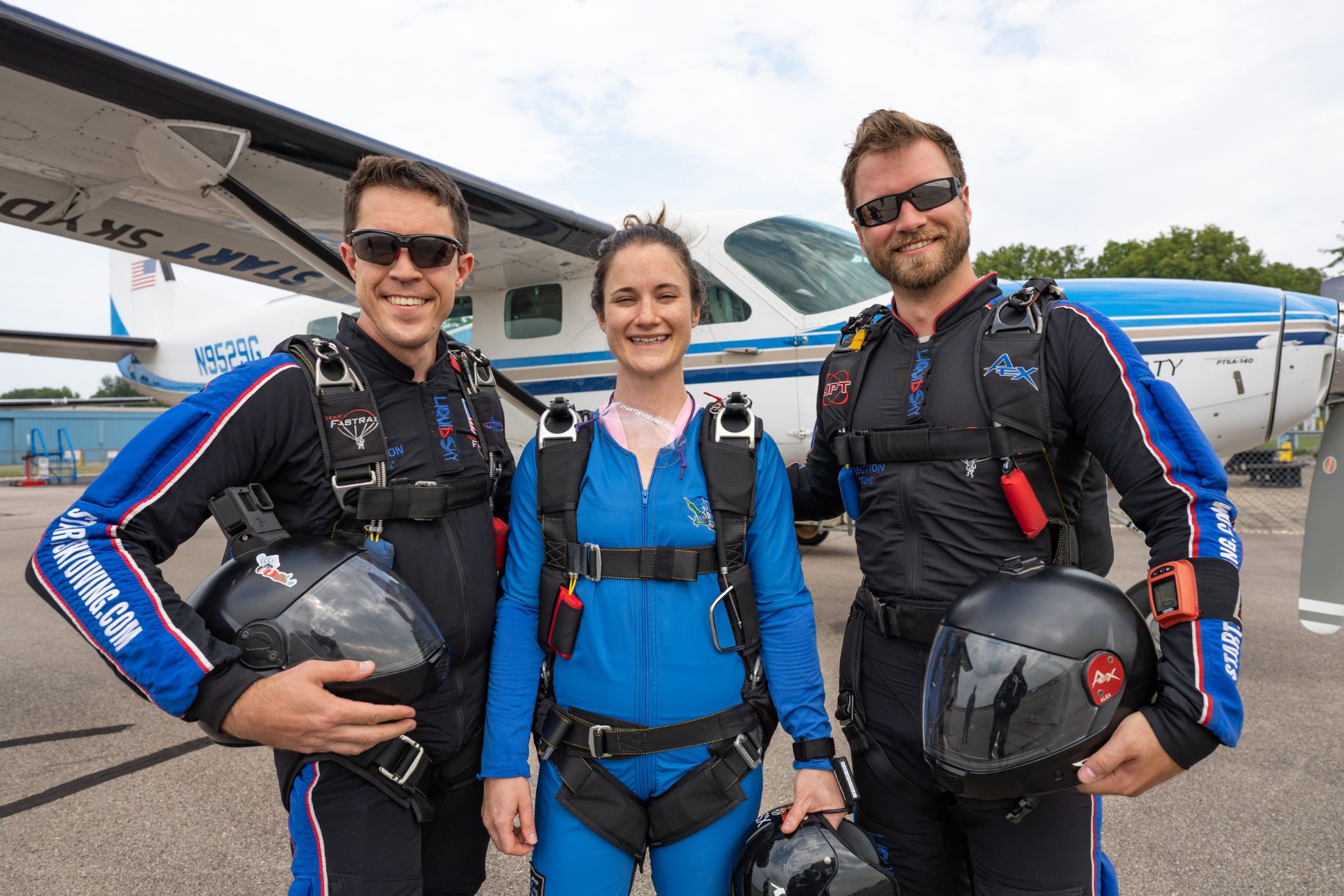
Time Commitment
Tandem skydiving offers immediate gratification, with only a short training session before your jump. Solo skydiving, on the other hand, demands a significant time investment for training before your first jump and even longer (about a month or more) for earning A license certification.
When choosing between tandem and solo skydiving, consider your own comfort level, the required time and financial investment, and assess your long-term goals. Whether you opt for the ease of a tandem jump or go for the independence of a solo skydive, the sky’s the limit for your next adventure!
Ready to take the next step? Book your AFF First Jump Course or tandem skydive today! And if you have any questions at all, visit or contact Start Skydiving. Blue skies, friends!
